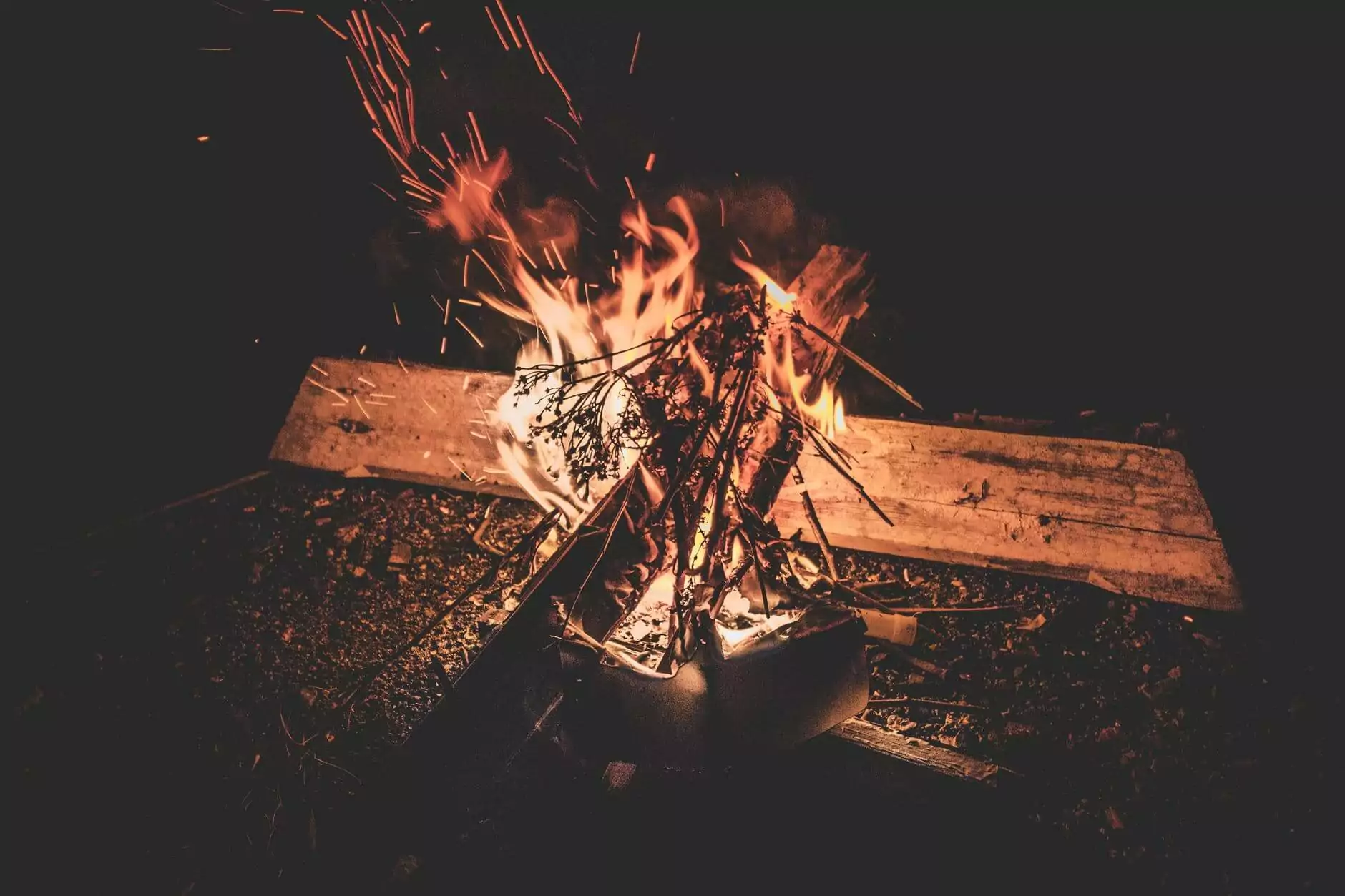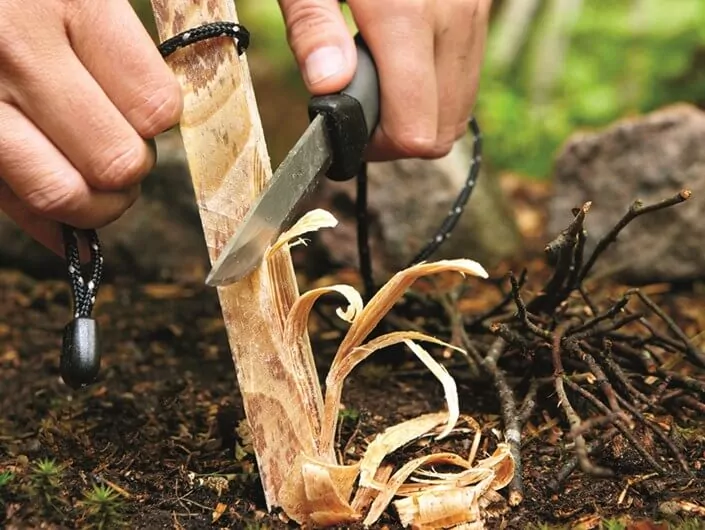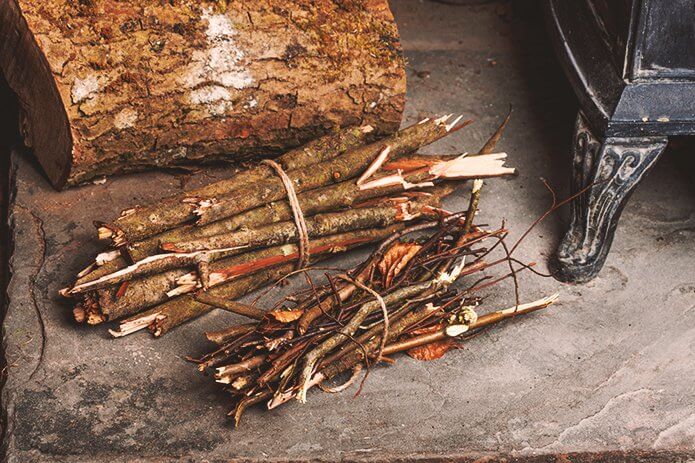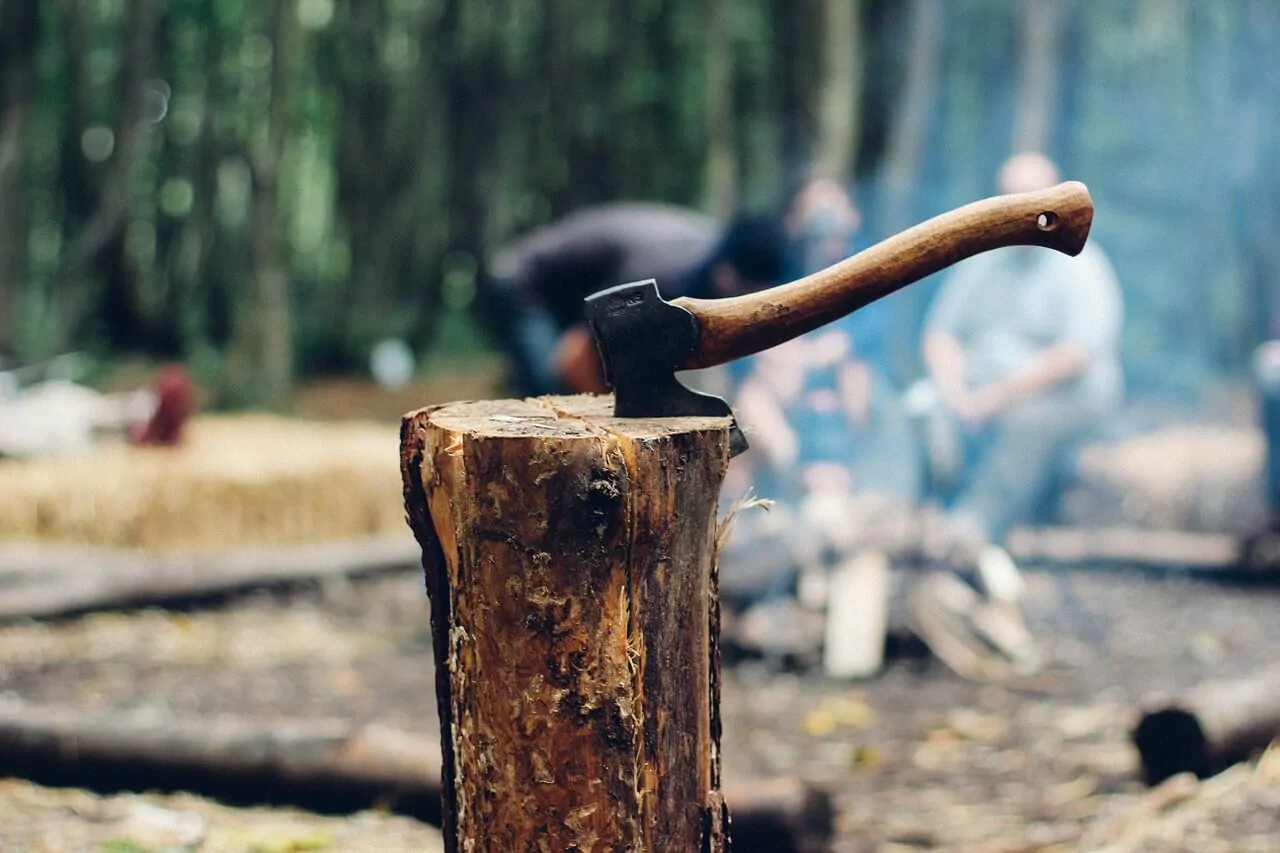There’s nothing quite like a sitting around a campfire or being nestled up by a fireplace. But for those of us who are unsure how to even get started building a wood fire – taking on the task can seem quite daunting. Luckily, building the perfect fire isn’t that hard! In fact, with the proper tools and quantities, getting your fire going is as simple as 1-2-3.

There’s certainly a difference between a good fire and a great one. And every great fire is made up of the proper elements! These elements include:
Most of the hard work of building a fire actually comes before a fire is built. Gathering the proper sizes and quantities of tinder, kindling, and fuel happens to be the foundation to a great campfire.
Speaking of foundations: it is essential to have a clear, safe space for the fire. There should be six feet of clearance from any trees or other flammable vegetation, if you do not have a dedicated fire container such as a grill or fire pit. Rocks, sand, or dirt, can all be used to line your fire pit.
A fire is built in three stages: starting with the smallest, easiest combustible element (tinder) and finishing with the largest and least combustible (fuel).
Now let’s take a look at what makes up each of these fire-making elements and where we can find them!

Tinder is step one to building a fire. It’s the spark that starts a fire. It’s an easily combustible material that’s primary purpose is to ignite kindling (or move you from step one to step two). It usually consists of small shavings or shreds of material that can burn hot and quickly.
Remember that quantities are important! So how much tinder do you really need? The standard method of measurement is that tinder should be around the size of pencil lead in terms of thickness, and should be about the length of your outstretched hand. You should gather enough to fill a circle made with both your hands.
Materials that can be used for tinder:
Remember: never use green or wet wood when building a fire. Green wood will not spark easily and cannot be used as tinder. It will not remain hot enough to ignite the kindling.
Other resources to use as tinder:
Now that we’ve gathered enough tinder, we can now move on to step two: kindling!

Kindling is the second step to building a great fire. It is larger than tinder and its main job is to heat the fire to burn the wood logs (or fuel) and to keep the fire burning after it has started. Tinder is too small of a flame to heat large logs but is the perfect first step to heating kindling!
Materials that can be used for kindling:
All kindling should be dry! Do not gather from the wet ground. If it has been raining, instead look for branches that are dead and at the bottom of a tree or shrub. Like tinder, they should snap easily when broken off.
Know that you know what to find, the next step is gathering the correct amounts. Kindling should be no thicker than your thumb and lengthwise should only go from your elbow to your fingertips. You should gather enough for a generous armload. Kindling can be added to a fire to ensure the fire continues burning if the flames start to wain.
After gathering enough kindling, we can now focus on that which makes a fire a true fire: the fuel.

Wood used in a fire is called fuel. Once the kindling is burning steadily, it’s time to add the fuel. Wood used for fuel should be slow burning. It is less combustible and will burn steadily once ignited.
The best sources of wood to use to build a great fire should have these qualities:
As previously mentioned, dried wood is the best for burning. You want to make sure the wood you use as your fuel is not “green” or freshly chopped. Green wood will take longer to get started and will produce excessive smoke when it burns due to the moisture in it. Always harvest wood from dead trees!
Split the larger pieces of wood if you need to to make it easier to haul and/or stack. You should have a wood stack about as high as your knee when you start to build your fire.
Now that you know what to gather and how much to gather to build a great fire, here are the three basic steps to put them all together!
And it’s just as simple as 1-2-3! Be sure to build your fire as you go. And now that you have all the makings to a great fire – get to crackin’!
Woodchuck Delivery is a family owned, white glove firewood delivery company. Residents and business owners in Austin, Texas and the surrounding areas rely on our exceptional quality firewood, supreme customer service, and convenient delivery. We understand the importance of convenience, quality, and dependability – bringing firewood delivery to the 21st century. Call us today at (512) 387-7270 or order online today!
© 2023 WOODCHUCK DELIVERY ALL RIGHTS RESERVED